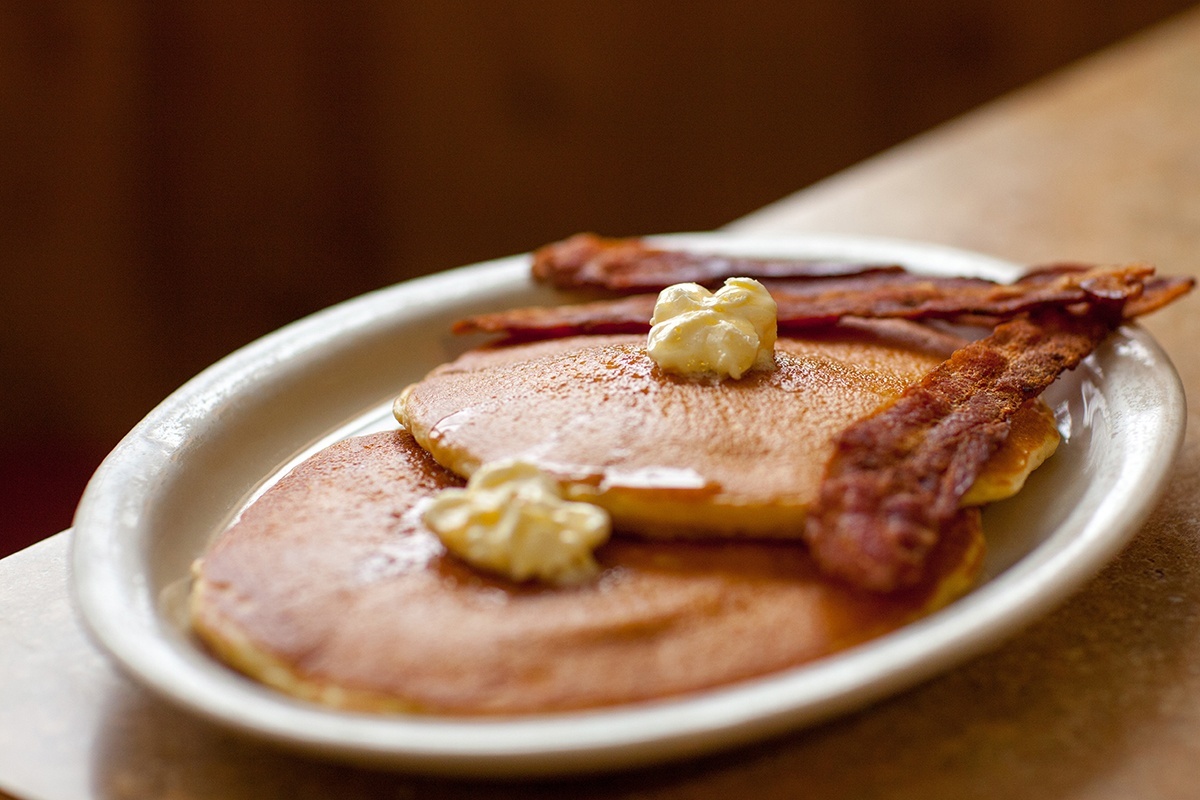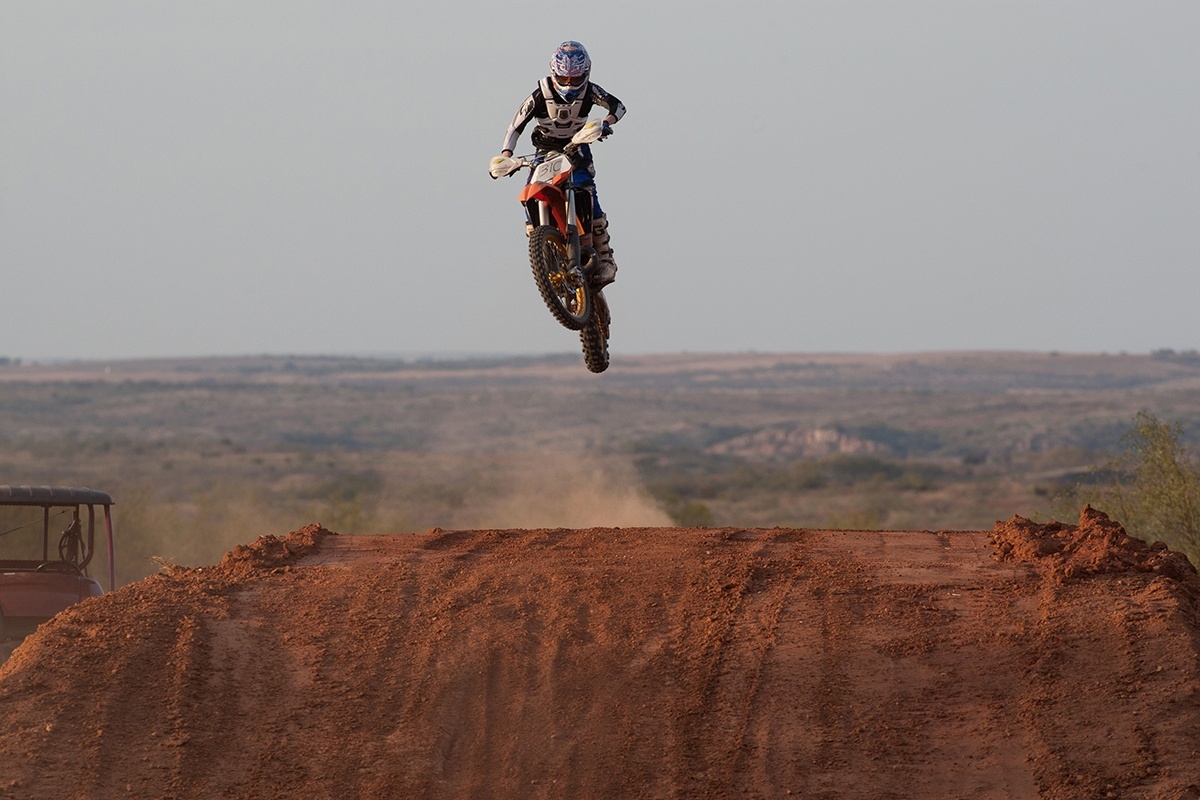On Saturday mornings, Childress offers its true character to visitors. Even though its population is 6,500, it bustles with a tempo that belies its rurality.
U.S. Highway 287 runs through town and brings travelers from downstate, the Gulf Coast or the Rocky Mountain states. On Childress’ west side, 287 intersects Highway 83, which runs from Mexico to Canada. With busy blacktops, Childress prospers as a center for retail, agriculture, government and medical care.
“Childress has come so far over the past couple of decades,” says Adam Bishop, a vintner who owns 501 Winery downtown. “We’ve got a good group of people who think big and are transforming the town into a special place, to make sure our kids have a reason to raise their families here.”

Web Extra: Adam Bishop, owner of Bishop Vineyards, checks on this year’s crop of wine grapes.
Russell A. Graves
Every Saturday, my wife, Kristy, and I spend the day in town to catch up with friends and do our weekly shopping. It’s a date night on Saturday morning. While we shop for necessities to keep our hobby farm humming, others watch a mounted shooting competition in the event center. Nearby sits Rock Field, a historic 75-year-old Civilian Conservation Corps project with the character of a minor-league baseball park.
“We always look forward to stopping in Childress,” says Coloradan Brian Strickland, who visits Childress on his way to see family in East Texas.
“I’m an avid golfer, so I look forward to playing a round on the course there,” he says. While he plays, his wife walks downtown to take pictures of historic buildings.
“It’s really got a great small-town feel,” he says. “I’ve been fortunate enough to befriend some people who live in Childress and sometimes come back to hunt deer or turkey.”
At about 1,800 feet elevation, the town lies on a ridge that’s the geographic divide between the Red River to the north and the Pease River to the south. Childress lives in the corner of Texas where the Panhandle meets the Red River, so the Oklahoma border is just a few miles northeast.
For Kristy and me, Saturday breakfast is always at Dawson’s Family Restaurant. With décor that leans toward Western, friendly waitresses and a talkative clientele, Dawson’s is the ideal diner.

Web Extra: A short stack of pancakes at Dawson’s Family Restaurant, a favorite roadside eatery for locals and travelers
Russell A. Graves
After we leave Dawson’s, we head to Amazing Grace Antiques and Gifts. The store is in a tiny house, but when you walk in and see the eclectic offerings that are stacked wall to wall, the place seems huge. I buy a couple of turquoise-colored antique telegraph insulators.
Kristy suggests we visit Ballyhoo, part home-décor showroom, part coffee-and-sweet shop. We each order a salted caramel macchiato to sip as we browse the farmhouse-inspired collection.
Recently named to the National Register of Historic Places, downtown Childress is marked by its brick streets and architecture that includes art deco and West Texas functional. The brick streets were laid by the Works Progress Administration in the 1930s. Around town, remnants of that era tell a story: the World War II army airfield that now serves as the municipal airport, and the living hedge-rows, called shelterbelts, planted during the Dust Bowl to halt desertification.

Web Extra: Downtown Childress is re-emerging as a commercial hub as buildings such as the Palace Theater are restored.
Russell A. Graves
The historic Childress downtown is making a comeback, with redevelopment funds transforming long-vacant buildings into commercial, public-use and residential space. Notable is the six-story Hotel Childress, the town’s only “skyscraper,” which dates to the 1920s.
By midday, Kristy and I are enjoying food at JT’s Drive In, a barbecue place that stands as another standard-setter of local establishments. The smoke rolling from its train-shaped smoker lures passersby. By most modern indices, JT’s is small—about 1,200 square feet, with less than half reserved for the dining area. The flavor of the chopped barbecue sandwich, however, is huge. We eat at picnic tables outside as the cars pass by on the highway. The traffic is another reminder that the town, even for its small size, really bustles.
Writer and photographer Russell A. Graves is a member of South Plains EC.






